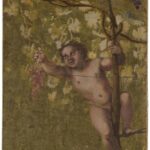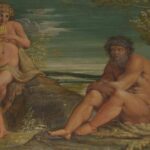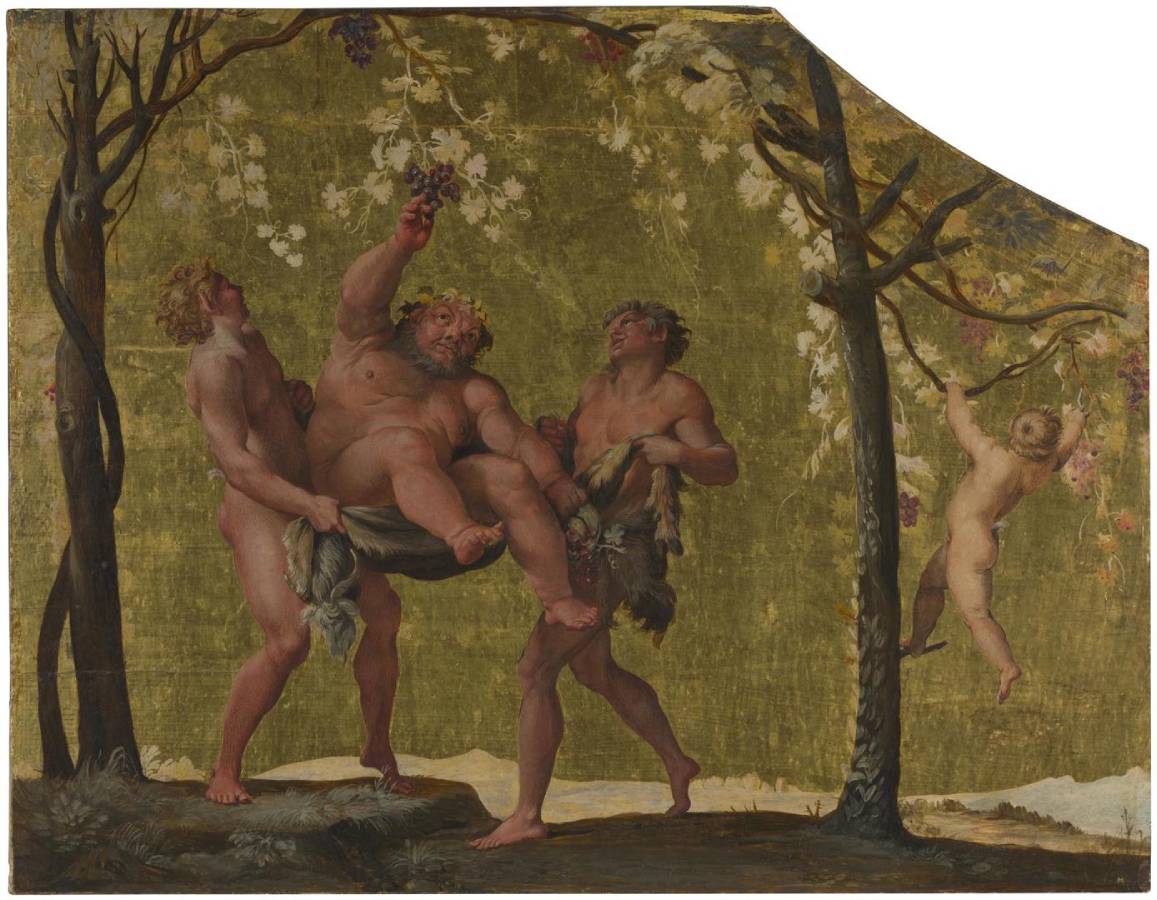Carracci, Annibale (1560-1609)
Sileno che raccoglie l’uva (Silenus gathering Grapes)
1597–1600
Oil and egg on wood, 54.5 x 88.5 cm
National Gallery, London
Using an animal skin, two laughing satyrs with pointed ears and short tails – although without the usual hairy legs – lift a plump man to pick the grapes that dangle above him. To the right a young satyr clambers up a vine and reaches out for another bunch. The man is Silenus, teacher and companion of Bacchus, the classical god of wine. In visual representations he was generally shown drunken, as here, and sometimes riding a donkey or surrounded by a crowd of rowdy revellers.
This irregularly shaped panel was once part of the inside of the lid of some kind of harpsichord. Young Satyr gathering Grapes and Marsyas and Olympus come from the same instrument, or perhaps a pair of instruments. The panels were possibly commissioned by the scholar and collector Fulvio Orsini, librarian and curator to the Farnese family, Annibale Carracci’s most powerful patrons in Rome.
The Farnese evidently had a liking for the subject. Silenus is given pride of place on the ceiling Annibale painted in the Farnese Gallery, as well as in a series of drawings on the theme which Annibale did as designs for Cardinal Odoardo Farnese’s silverware. Drawings in the British Museum, the Art Institute of Chicago and the Metropolitan Museum of Art, New York, also show Silenus in various states of drunkenness. (NG)
The other panels:
 Carracci, Annibale (1560-1609)
Carracci, Annibale (1560-1609)
Giovane Satiro che raccoglie l’uva
1597–1600
National Gallery, London
 Carracci, Annibale (1560-1609)
Carracci, Annibale (1560-1609)
Marsia e Olimpo
1597–1600
National Gallery, London
These three panels were originally part of an early keyboard instrument, or possibly a pair of instruments, and show scenes of music-making and drinking. Silenus gathering Grapes and Young Satyr gathering Grapes are probably from the inside of the lid, and would only have been seen when the instrument was open. Marsyas and Olympus may have also belonged to the lid of the keyboard or to some part of the instrument’s case.
They were painted by Annibale Carracci in the late 1590s, perhaps for Fulvio Orsini, classical scholar and librarian/curator to the powerful Farnese family in Rome. The designs for some of the figures are based on classical objects owned by the Farnese. (NG)
